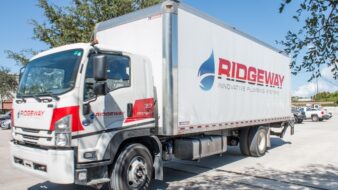Washington — The U.S. Environmental Protection Agency (EPA) today released a survey showing that $271 billion is needed to maintain and improve the nation’s wastewater infrastructure, including the pipes that carry wastewater to treatment plants, the technology that treats the water, and methods for managing stormwater runoff.
The survey is a collaboration between EPA, states, the District of Columbia, Puerto Rico, and other U.S. territories. To be included in the survey, projects must include a description and location of a water quality-related public health problem, a site-specific solution, and detailed information on project cost.
“The only way to have clean and reliable water is to have infrastructure that is up to the task,” said Joel Beauvais, EPA’s Acting Deputy Assistant Administrator for Water. “Our nation has made tremendous progress in modernizing our treatment plants and pipes in recent decades, but this survey tells us that a great deal of work remains.”
Adequate wastewater infrastructure plays a vital role in the health of streams, rivers, and lakes, where discharged wastewater and stormwater runoff often end up. Wastewater infrastructure must also become more resilient to the impacts of climate change, including sea level rise, stronger and more frequent storms, flooding, and drought.
Wastewater infrastructure improvements also support healthy economies. Construction projects create good-paying jobs, and where new facilities are built, workers are needed to operate and maintain them. Upgraded infrastructure results in cleaner water, which is essential for many businesses and sectors of the economy.
EPA launched the Water Infrastructure and Resiliency Finance Center in January 2015 to work with states and communities to identify innovative financing strategies for drinking water, wastewater, and stormwater infrastructure. The center recently selected regional Environmental Finance Centers to help communities across the country develop sustainable “how-to-pay” solutions to meet environmental goals. This financial expertise and technical assistance helps communities make informed funding decisions for resilient infrastructure projects that best meet local needs.
In addition, EPA offers financial assistance to address the types of infrastructure needs covered in the survey. The Clean Water State Revolving Fund has provided more than $111 billion in low-interest loans since its inception in 1987, with $5.8 billion in FY 2015 alone. Grant funding is available through the Alaska Native Villages and Rural Communities program, the Clean Water Indian Set-Aside, and the U.S.-Mexico Border Water Infrastructure program.
The average American receives a much higher level of wastewater treatment today compared to when the Clean Water Act was passed in 1972. Between 1972 and 2012, the U.S. population receiving secondary treatment increased from about 75 million to 90 million, and the population receiving advanced treatment increased from 7.8 million to 127 million. Over the same period, the population receiving less-than-secondary treatment decreased from almost 60 million to 4.1 million. This has resulted in dramatic improvements in the waterways receiving discharges from these treatment plants.
The $271 billion is primarily for projects needed within five years. The survey reported the following infrastructure needs:
• Secondary wastewater treatment: $52.4 billion to meet secondary treatment standards. Secondary treatment uses biological processes to meet the minimum level of treatment required by law.
• Advanced wastewater treatment: $49.6 billion to provide upgrades so treatment plants can attain a level of treatment more protective than secondary treatment. Advanced treatment may also treat nonconventional or toxic pollutants such as nitrogen, phosphorus, ammonia or metals.
• Conveyance system repair: $51.2 billion to rehabilitate and repair conveyance systems.
• New conveyance systems: $44.5 billion to install new sewer collection systems, interceptor sewers and pumping stations.
• Combined sewer overflow correction: $48 billion to prevent periodic discharges of mixed stormwater and untreated wastewater during wet-weather events.
• Stormwater management programs: $19.2 billion to plan and implement structural and nonstructural measures to control polluted runoff from storm events.
• Recycled water distribution: $6.1 billion for conveyance and further treatment of wastewater for reuse.
Visit http://www.epa.gov/cwns for more information on the report.




Join the conversation: